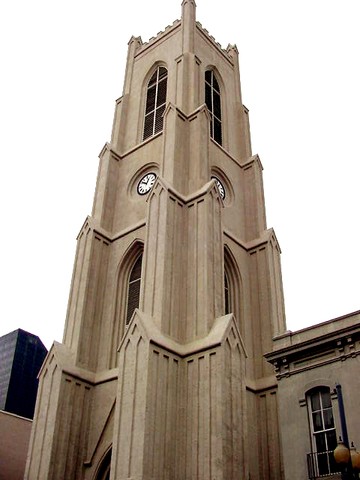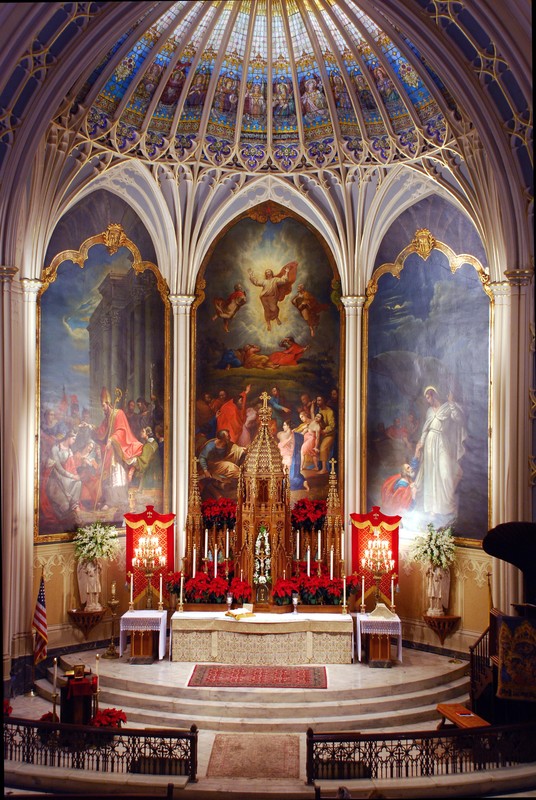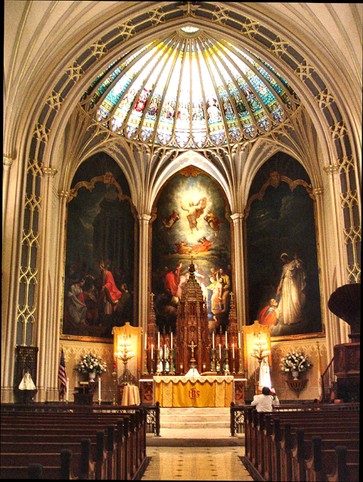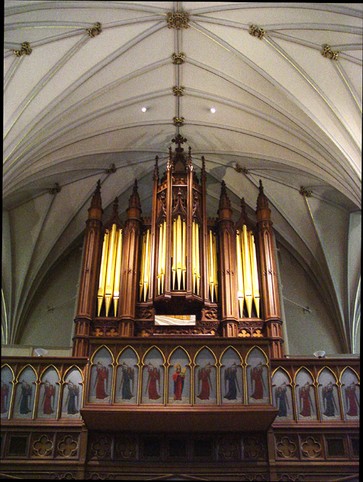St. Patrick's Church
Introduction
Text-to-speech Audio
Images
Exterior view (http://www.neworleanschurches.com/)

Sanctuary view (oldstpatricks.org)

Sanctuary view (http://www.neworleanschurches.com/)

Organ with murals (http://www.neworleanschurches.com/)

Backstory and Context
Text-to-speech Audio
The building is composed of brick, covered in plaster that was once painted to imitate dressed stone (this was later replaced by the white rough-cast weatherproofing cement seen today). It has a 190 ft high bell tower, that has survived numerous hurricanes, lightning strikes, and periods of inadequate upkeep - though substantial repairs were required following Hurricane Betsy in 1965. Near the church can be found an Italianate rectory built by plantation architect Henry Howard in 1874.
The interior design was largely influenced by James Gallier directions. Visitors can admire the plaster fan vaulting, cypress pews, and the magnificent stained glass ceiling skylights of the sanctuary, which dramatically illuminate the altar during the day. Beneath this sanctuary are the interred remains of Irish-born Father James I. Mullon, who was the second pastor of St. Patrick's and a who fought for the U.S. Navy during the War of 1812. Of exceptional note is are the three oil paintings found in the sanctuary. Painted by the young New Orleanian artist, Leon Pomarede, in 1840, they depict St. Patrick baptizing the princesses of Ireland and the Transfiguration. Pomarede also painted a series of murals on the church organ, which was itself salvaged from an organ built by the renowned French organ maker, Aristide Cavaille-Coll, who made the instruments for Notre Dame Cathedral, Paris.
Sources
Goeldner, Paul. "National Register of Historic Places -- Nomination Form." United States Department of the Interior/National Park Service. January 8, 1974. Accessed January 26, 2017. https://focus.nps.gov/GetAsset?assetID=552882ac-b4b6-4480-81f2-6e3e257a3c27
Schneider, Frank. "History of St. Patrick's Catholic Church. New Orleans Churches. September 1994. Accessed January 26, 2017. http://www.neworleanschurches.com/stpatrick/stpat.htm
Schneider, Frank. "History" Old St. Patrick's. September, 1994. Accessed January 26, 2017. http://oldstpatricks.org/news/our-history/
